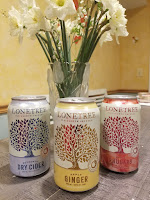The Etyek-Buda PDO has many unique characteristics regarding Hungarian wine regions. It is very small (1,652 hectares of vineyards) and the closest to Budapest -- located just over the Buda Hills and extending southwest to Lake Velence (Hungary’s second largest lake) near the former royal city Szekesfehervar and southwest to the slopes of the Gerecse hills. The climate here is influenced not by one, but by three geographical features; the Alfold plains to the south, Lake Balaton to the west, and the mountain winds from the Carpathians to the north. These winds help make this one of the coldest climate regions in Hungary with an average temperature of 9.5° to 10.5° C (49° to 51° F). The soils are predominately limestone and these rolling hills have historically been planted with international varieties used in sparkling wine production: Pinot Noir, Chardonnay, and Sauvignon Blanc. Yes, even Sauvignon Blanc is used to produce Asti-like sparklers. Törley, Hungary’s largest sparkling wine producer, has been producing sparkling wine from Etyek-Buda grapes since 1882.
Szentesi Pince is another producer utilizing grapes from this area and more importantly, József Szentesi has been instrumental in re-introducing older grape varieties lost during the phylloxera scourge in the late 19th century back to the region. In 1988, "after studying 19th-century viticultural and oenological works, he decided to plant 10 forgotten white and blue grape varieties. He requested canes from the Viticulture and Wine Research Institute of the University of Pécs and began propagating and planting the varieties around Lake Velence". Today this endeavor has expanded to 30 grape varieties planted on 14 hectares of vines. According to the winery, and common sense suggests, that "experimenting with nearly 30 varieties is extremely challenging since in each vintage you have to hit the right harvest time exactly thirty times, you have to process thirty distinct grapes, and you have to deal with thirty different wines separately".
Laska is one of these forgotten grapes and according to Taste Hungary, "used to be amongst the most popular varieties in Hungary. But then phylloxera invaded in the late 1800s and changed the landscape of Hungarian (and European) wine. Many old Hungarian varieties died out and were not replanted. Only 10 Laska vines survived, which Szentesi discovered at the wine research institute in Pécs and planted in his vineyard". In the vineyard, Laska is late-ripening and compressed into small bunches. Grape growers must control yields to ensure full ripening.
The Szentesi Laska 2020 ($29.90) is produced using natural fermentation, 14 months of oak aging, and bottled unfiltered. This is a very intriguing wine; fruit-forward and medium-bodied carrying red fruits such as cranberries, cherries, and raspberries. The landing is rather soft with white pepper, approachable tannins, and lingering acidity. Try after a short chill. And too bad the seasons are off - this would work at Thanksgiving with turkey and cranberry sauce.







